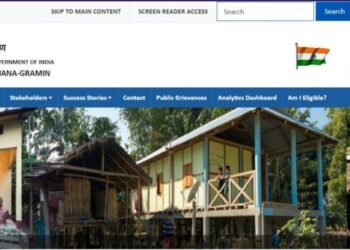Congress leader Priyanka Gandhi Vadra’s roadshow at Badkas Chowk, near the RSS headquarters in Mahal, saw high drama as BJP workers waving party flags clashed with Congress supporters brandishing the tricolor. However, Priyanka’s event drew significantly larger crowds than the more subdued turnout for BJP MP Kangana Ranaut’s rallies.
BY PC Bureau
Nagpur
It was no ordinary Sunday in Nagpur. The sun rose over a city buzzing with anticipation, as the political heart of Vidarbha prepared to witness a dramatic showdown. With just 24 hours left before the curtains fell on the campaign for the state assembly elections, two women from very different worlds descended upon Nagpur, each with a singular mission: to sway hearts, minds, and votes.
On one side was Priyanka Gandhi Vadra, her charisma infused with the legacy of India’s most storied political dynasty. On the other, Bollywood star-turned-politician Kangana Ranaut, whose glamorous appeal had been repurposed into a weapon for the BJP’s campaign arsenal.
The streets of Nagpur turned into a theater of contrasts, as the two leaders led parallel roadshows, crisscrossing constituencies in their race to dominate Vidarbha’s electoral narrative.
Priyanka’s roadshow began with a symbolic flourish. As her motorcade snaked through the narrow lanes of Mahal, near the RSS headquarters, tension hung heavy in the air. Congress workers waved the tricolor with fervor, their voices rising in defiance as BJP supporters with saffron flags closed in. For a moment, it felt as though the streets of Nagpur had become a battleground.
But Priyanka remained unshaken. Her route was as strategic as it was symbolic, weaving through the Muslim-majority neighborhoods of West Nagpur, where cheers and flower petals greeted her at every turn. Starting in Awasthi Nagar, she traveled through Zafar Nagar and Ahbab Colony before arriving at the historic Badkas Chowk.
Her arrival was met with thunderous applause, the crowd swelling like a tide as she waved from her vehicle. Smiling and confident, she seemed to embody the Congress party’s message of inclusivity and resilience. The moment felt historic, a reminder of Sonia Gandhi’s rally in the same city two decades earlier. Now, it was Priyanka’s turn to carry the mantle—and she did so with aplomb.
Kangana’s Glamorous Gambit
Across town, Kangana Ranaut brought her own brand of star power to the BJP’s campaign. Draped in a vibrant saree, she moved through the cosmopolitan neighborhoods of Nagpur Central in the morning, her convoy stopping at key locations like Law College Square and Bajaj Nagar.
Her approach was quieter, almost intimate. She waved to small groups of supporters, her megawatt smile hinting at the film star persona that had made her a household name. But despite the meticulous choreography, the crowds she drew were modest.
Unlike Priyanka’s emotionally charged roadshow, Kangana’s campaign seemed to rely on her celebrity aura rather than a political message. It was a strategy that had worked in smaller constituencies, but in Nagpur, a city of sharp contrasts and deep-rooted political loyalties, it felt out of place.
As the day unfolded, it became clear that the roadshows were more than just political events—they were the embodiment of two conflicting visions for Maharashtra.
Priyanka’s campaign leaned heavily into the Congress narrative, highlighting issues of economic justice and developmental inequities. At a rally earlier in Gadchiroli, she invoked the legacy of her great-grandfather, Jawaharlal Nehru, and criticized the Modi government for diverting investments away from Maharashtra. “They are destroying the future of Maharashtra and its youth,” she said, her voice ringing with conviction.
Kangana, meanwhile, became the face of the BJP’s polarizing rhetoric. Her speeches echoed the party’s slogans, urging voters to support a “dharma yudha” and protect the nation’s religious heritage. The RSS, too, made its presence felt, distributing voter slips with messages that urged people to vote for “Rashtra-hit” (national welfare).
The polarization was palpable, cutting across caste and religious lines. Priyanka’s route through Muslim-majority areas felt like a deliberate challenge to the BJP’s stronghold in Mahal. Meanwhile, Kangana’s focus on cosmopolitan neighborhoods underscored the BJP’s attempt to court urban voters.
As the sun set over Nagpur, the two roadshows drew to a close. Priyanka had arrived an hour late but had stolen the show with her magnetic presence and massive turnout. Kangana, despite her best efforts, had been overshadowed.
The day felt like a microcosm of the larger battle for Maharashtra—one side banking on legacy and inclusivity, the other on celebrity and polarization.
When the votes are cast and the results announced, it won’t just be a verdict on the assembly elections. It will be a judgment on the narratives that shaped this extraordinary day in Nagpur, where politics met drama, and two women lit up the city’s streets with their distinct brands of power.













